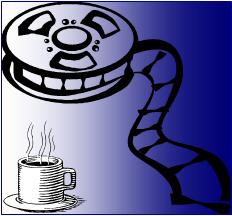

|
 |
Australia and Walkabout
|
Please go to the new Coffee Coaster site implemented more gracefully in Wordpress. This page: http://brianrwright.com/CoffeeCoasterBlog/?p=3692 |
Hugh Jackman ... Drover
Nicole Kidman ... Lady Sarah Ashley
Brandon Walters ... Nullah
David Gulpilil ... King George
David Wenham ... Neil Fletcher
Bryan Brown ... King Carney
David Ngoombujarra ... Magarri
Nullah: Missus Boss, I sing you to me.
Lady Sarah Ashley: And I will hear you.
Magarri: If you've got no love in your heart, you've got nothing... No dreaming, no story, nothing.
First the conventional large-budget blockbuster, which was disappointing at the box office: It's fascinating, the effect of corporate marketing on a film, so much of the success of the effort depending on how the executives represent it. I remember the fuss the marketers made about the supposed epic love story between characters played by Hugh Jackman and Nicole Kidman—both major Hollywood stars, both born and raised in Australia, and both 10s on the physical attractiveness meter. First, the movie is fundamentally not a love story. Second, the true leading characters are an Aboriginal old man named King George (David Gulpilil) and a mixed-race pre-teen boy named Nullah (Brandon Walters).
Australia is like Walkabout below, a Clash of Civilizations movie with 100 times the budget. Stealing the show is Brandon Walters, whose Nullah simply enchants you from the gitgo: through his singsong voice, often in narrative, and his heart-rending situation—he's grown up in both worlds, and is on the threshold of having to do a walkabout under direction of King George. But he begins to love his new white mother-figure from afar, Lady Sarah Ashley (Nicole Kidman), who isn't a typical sheila that the local land barons can run roughshod over.
The plot involves the need for Lady Ashley—who has come from England to take over Faraway Downs, a ranch she inherited—to drive 2,000 head of cattle to a shipping point on the northern coast where they will be used to feed Allied troops in their WWII campaigns against the Japanese. She enlists the aid of Drover (Hugh Jackman), a former ranch hand, who has established himself as the best horseman in the region... also a man who befriends Aborigines and counts among his best friends his 'mate,' Magarri. This sort of individuality is looked down upon by the man on the street, as well as Fletcher, the crooked neighbor who represents the consortium trying to take Faraway Downs away from Lady Ashley.
The pith of the movie is a cattle drive against all odds, across a section of Australia that is, at least cinematically breathtaking—though harsh. Because Fletcher prevents Ashley from getting a crew, she brings only friends and family to get the job done, including Nullah. Fletcher and his goons constantly sabotage the drive, but the good guys eventually escape intact... only to face crossing the Never-Never, an uncharted expanse of desert, which has never been accomplished by a white man. King George, though, who is following along, agrees to 'sing' them through.
The primary theme of this utterly FABULOUS and large movie—I have not touched on other key parts of the plot—is natural spiritual awareness vs. the 'civilized' technology of blind collective obedience to coercive authority. The secondary theme is man's inhumanity to man, particularly the Aussie whites attempting to 'assimilate' the Aborigines (basically by kidnapping and brainwashing children) into extinction. Jackman and Kidman do a wonderful job fitting their relationship into the broader epic. It is a fantastic and worthy effort: 9 out of 10.
Please go to the new Coffee Coaster site implemented more gracefully in Wordpress. This page: http://brianrwright.com/CoffeeCoasterBlog/?p=5135 |
Jenny Agutter ... Girl
Luc Roeg ... Boy (Lucien)
David Gulpilil ... Aborigine Boy
John Meillon ... Man
Girl: Water. Drink. We want water to drink. You must understand! Anyone can understand that. We want to drink. I can't make it any simpler. Water. To drink. The water hole has dried up. Where do they keep the water?
Believe me, this low-budget, early 1970s subtle cause-oriented art film is unlike any you will ever see. Unique in so many ways: a) for painting an unromanticized, existential-angst picture of white Australia, b) for showing the connection/disconnection between a colonizing civilization and the indigenous culture displaced by that civilization, and c) for plumbing the elemental depths of how man and woman survive in nature. If I had to pick a genre for the film, I'd call it a combination of environmentalist and native peoples' epic, say, Jeremiah Johnson meets Dances with Wolves—to the accompaniment of Albert Camus reading his book, The Stranger.
But there's a lot of teen sex in here, too. Or at least cinematic suggestion of what sex is really about when you remove the accouterments of culture. Did that get your attention? Briefly the plot: on a weekday after the kids return from school, the father (John Meillon) of Girl and Boy takes them deep into the Australian desert, ostensibly for a picnic. Papa goes completely unhinged—the movie suggesting it's a mental breakdown due to unnatural modern living—and the children are stranded a hundred miles or so from the city where they have grown up (Adelaide?). So there they are, Girl (teenager) and Boy (grade schooler), both in their class uniforms—her's includes the ever-practical short skirt, his, shorts—facing the wilderness with a bottle of juice and a briefcase full of toys.
The second day they manage to run into a small oasis, but the water source dries up the day after that. It's grim. Luckily they encounter an Aborigine boy (Gulpilil) on his 'walkabout,' a ritual in which the man-boy is left alone to his own devices for an extended period of time in nature... to prove he can 'cut it.' He doesn't understand English and they don't understand him, but he's kind enough to help them with their survival issues and also guides them toward the white world they obviously come from. Now it's a journey-in-the-wild movie with short camera flashbacks to the white world pertinent to the raw essence of, mainly, Girl's experience.
Some of the scenes featuring others contrast the Aboriginal ways of dealing with nature with the white way, or at least a substantial part of the white way, e.g. two white young goons go on a killing spree of large wild animals—not for food or for horns or anything else, just for target practice, just to kill the animals. Aborigine Boy sees this and the camera notes his expression of deep sorrow. That's a vital quality of the film: it's all camera work, the camera is filming this and that to tell a message beyond words. Accompanied by a unique musical score, which includes many sounds, or suggestions of sounds, from the world of the Aborigine. I don't find the camera-story strident at all, rather matter-of-fact, damning to those who would live in nature by the Columbian model: destroy, extract, but do not understand. Outstanding and thought provoking.
###
2011 February 09
Copyright © Brian Wright | The Coffee Coaster™
Hugh Jackman | Nicole Kidman | Australia | Jenny Agutter | Walkabout
| Publish Fee: $25 Donation |  |
Please donate $1 for download of PDF
|
||
| |